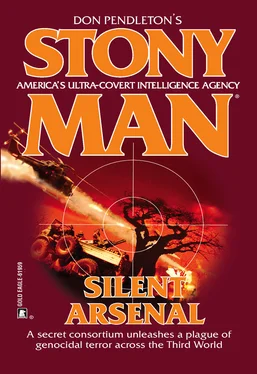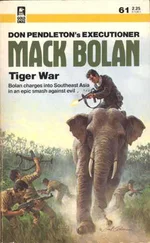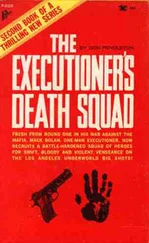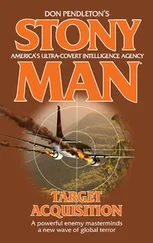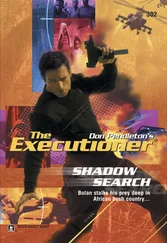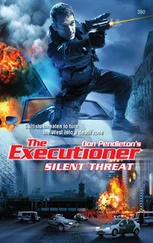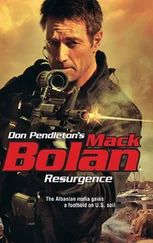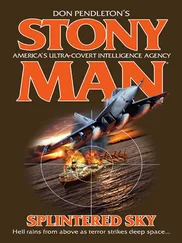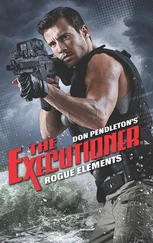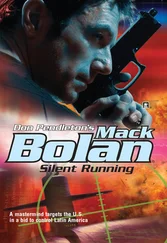General Nuyaung decided he was in no rush to hit the ground.
Exactly what had happened almost three nights ago remained a puzzle, but a mystery rife with horrifying implications for the entire country, he knew. Beyond the outbreak of plague, there was the matter of internal security, now threatened by foreign intelligence agents looking to capitalize on the supposed good will of a concerned global community.
Already there had been leaks about the disaster to the western media, CIA or DEA in-country operatives, most likely, pushing panic buttons around the globe, seeking only to infiltrate agents into what they branded a closed society, wishing to subvert and overthrow the ruling powers, disrupt or eradicate the production and flow of eighty percent of the world’s heroin. The hue and cry from the shadows was working.
Already the United Nations, Red Cross and even the American Centers for Disease Control were offering aid and assistance. He wasn’t fooled by the charade of proposed charity. Nuyaung—as did the other members of the SLORC—feared their troubles had only just begun.
Nuyaung wondered what nightmare he would find when he landed at the refinery, even though the intelligence report, complete with photos of victims and initial medical analysis, was perched on his lap. The unidentified object had been painted on their radar screens in Yangon, he remembered, as he had been called in to the Supreme Command and Control Center as soon as it had been picked up, forty-something thousand feet directly above the Kachin State. It had dropped like a streaking comet out of the sky, plunging to earth at more than seven hundred miles per hour before any fighter jets could be scrambled to destroy it. Then, incredibly, the object had slowed its own descent and cut to a mere impossible hover before sailing north.
At first they’d believed they were under attack, frantic speculation even that perhaps the DEA was striking the poppy fields with some supertech thermite bomb meant to incinerate the countryside of what had become the lifeblood of the SLORC. Their technical experts had measured the object at two hundred feet across, sixty feet top to bottom. Beyond the dimensions of the object there was little more than roundtable guessing over what it was. Initial reports stated a white cloud had been observed erupting from the unidentified object, spreading over one square mile before dispersing. That much, he knew, had been verified, the first dead and afflicted struck down in the immediate area of what Yangon tagged Ground Zero. It was the living, dying in other quarantined areas, contaminated by a plague yet to be identified, that concerned Nuyaung the most.
He glimpsed the rolling green hills, their peaks swaddled in white mist, then perused the report once again as the chopper began to vector over the jungle canopy. Including villagers, his workforce and soldiers, the body count, as of six hours ago, now exceeded three hundred. Within several hours of the explosion the first symptoms marked the onslaught of the mystery illness. He recalled the dying words from his last radio contact with Colonel Lingpau.
“General…help us. We are all dying…fever. I am burning up…it feels…as if even my eyes…are on fire. Even my sweat…it is like blood. I am told it is blood…”
Fever. Convulsions. Black urine. Sweat filled with blood infected by plague. Was it an airborne contagion? he wondered. Could he be infected if some blundering fool accidentally brushed up against him? Could it spread through water, food? Was his merchandise contaminated?
The more he thought about it, General Nuyaung suspected someone had launched germ warfare against his country. But who? Why? Relations with neighboring China, Laos, Thailand, India and Bangladesh were anything but strained. The surrounding countries, naturally, guarded their borders, and those in charge of any nation always frowned and attempted to turn back or eliminate refugee hordes. There were, he knew, the occasional border skirmishes, usually involving contraband, but nothing so volatile as to warrant their neighbors unleashing a plague that could wipe out the entire population of Myanmar. And if the attacker was a neighboring country, they risked cross-border contamination. Then who?
It was an hour of madness, he knew, either way, but extreme measures were being initiated to, hopefully, contain the outbreak. There was still hope—if the situation was at least under control in the quarantined sectors, or all potential human contaminants eliminated, infected corpses removed then burned in some inaccessible stretch of jungle—he could save the product and meet his self-imposed deadline. Peasant workers and soldiers alike were easy enough to replace. His greatest fear, beyond personal risk of infection, was that perhaps the vast acreage of poppy and the refinery itself were contaminated.
Nuyaung flipped the file on the seat beside him. He tried to will away the images of the contorted death masks of victims and their faces riddled with red sores and bumps oozing pus, but they were branded in his mind. Perhaps, he considered, it was a grave mistake, after all, to expand heroin production outside the Shan State. But worldwide demand was up, particularly now that various Islamic organizations were gobbling up massive quantities of product, using the funds to finance the future of jihad, no doubt in clamoring search for weapons of mass destruction.
Having lost himself racking his thoughts for solutions to a variety of problems, he suddenly found his chopper hovering over the courtyard. The latest arrivals, some five hundred soldiers, were divided as evenly as possible throughout the stricken zones. Nuyaung stared into the inferno below, then saw a squad of SLORC soldiers dragging two robed monks past the three statues of the warrior guardians set near the three lions and three-headed elephant in front of the temple. The monks were still alive, one of them attempting to break free of the latex-gloved hands clamped around his shoulders. Nuyaung knew the filter masks the troops wore would be no protection against the plague if it was an airborne contagion, assumed the stench of burning flesh down there would bring his men to their knees if their faces weren’t covered. HAZMAT suits—the few that could be scrounged from various military and medical facilities—were reserved for the team of doctors. Depending on what he heard, he would pull rank, claim a HAZMAT suit for himself.
Nuyaung turned away as the monks were tossed into the fire. He glimpsed the towering plumes of black smoke, north and east, decided he could wait on reports about the sanitizing of contaminated peasant villages. He punched the intercom button, told his pilot, “Take me to the refinery. I will tell you where to land when we arrive.”
“THIS IS NOT the right time, Khisa. They are too many.”
She felt the fire burn behind her eyes, willed herself to hold back the tears, holding on to rage and hatred.
Ashre Nwa was right, she knew, but wondered, just the same, how much longer she could bear to watch the slaughter of innocent people she had sworn to protect, or avenge, before raw emotion compelled her to strike. If an attack was potential suicide before, the odds against even a pyrrhic victory were now clearly insurmountable.
Whatever happened as a result of the explosion had seen the quick arrival of more Barking Dogs, more helicopter gunships than she could count. A shock attack, unless she was committed to suicide and the senseless massacre of her fighters, was beyond hope. Five tanks had been airlifted into the surrounding area just after dawn, followed by still more soldiers, armored personnel carriers, antiaircraft batteries—an impregnable barrier.
Then there were men in space suits and the plastic tents hastily erected outside the perimeters of the villages, cylinders and steel tubes and vats, computers and other equipment she couldn’t possibly identify….
Читать дальше
